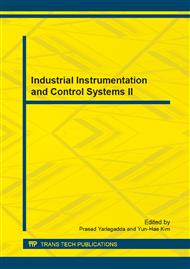p.2433
p.2438
p.2443
p.2447
p.2451
p.2455
p.2460
p.2464
p.2468
Energy-Efficient Rings: A Green Mechanism for Multi-Segment Fiber-Wireless Access Networks
Abstract:
In this paper, we propose a novel green mechanism called Energy-Efficient Ring (EER) for multi-segment Fiber-Wireless (FiWi) access networks. We first utilize clustering scheme to generate clusters each with the shortest distance of fully connected segments in it. Leveraging backtracking method, we then connect segments in each cluster through fiber links and the shortest fiber ring is constructed in each cluster. Finally, we sleep low load segments and forward affected traffic to other active segments on the same fiber ring. Experimental results show that EER significantly reduces the energy consumptions at the slightly additional cost of deploying fiber links.
Info:
Periodical:
Pages:
2451-2454
Citation:
Online since:
July 2013
Authors:
Keywords:
Price:
Сopyright:
© 2013 Trans Tech Publications Ltd. All Rights Reserved
Share:
Citation:


